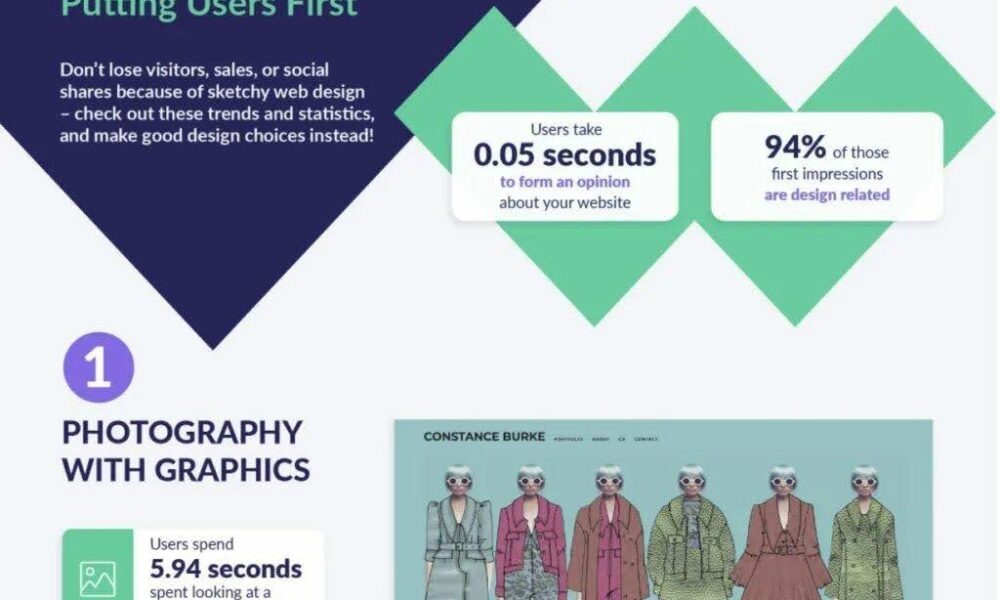Revolution in Design: Mikaela Berkeley’s View on Current Trends and the Future of UX

In recent years, user experience design has become one of the most discussed topics in the world of technology and business. With each new generation of devices and platforms, user demands are growing increasingly sophisticated, requiring designers to continuously improve their knowledge and skills. This article explores modern trends in UX design and provides a potential outlook for the future.
Personalization

One of the key trends that continues to gain popularity is personalization. Users expect interfaces to adapt to their preferences and behavior. This may include suggestions based on past actions and interface customization according to individual needs. Empirical analysis shows that factors like personalization, mobile-first design principles, and emerging technologies such as augmented reality (AR) and virtual reality (VR) significantly impact user engagement and satisfaction.
Mobile applications tailored to individual preferences and user contexts enhance satisfaction and interaction. Mobile-first design improves usability and performance, while immersive technologies open new horizons for engagement. Observations highlight the necessity of constant adaptation and innovation to meet evolving user demands and technological advancements. Contributions to theory, practice, and policy include applying the theory of planned behavior, the technology acceptance model, and user-centered design principles. These theoretical frameworks can serve as a foundation for future UX research.
Mobile app developers should focus on adding personalization features to adapt to user preferences and enhance engagement. It is also essential to apply principles that improve app usability on mobile devices. Developers are encouraged to integrate new technologies, such as AR and VR, while emphasizing accessibility and usability. Additionally, implementing a feedback system to collect user input and improve the app based on their comments is highly recommended [1].
Inclusive Design
Inclusive design is becoming a vital part of UX, ensuring interface accessibility for people with various limitations. It focuses on understanding the needs of diverse user groups, including individuals with disabilities, and incorporates methods such as user research, persona creation, and journey mapping. Prototyping enables the development of early product versions to visualize and test concepts, which is particularly important to ensure interface accessibility and usability.
This requires designers to have a deep understanding of the needs of different user groups and to apply universal design principles. Integrating these methods into agile development processes allows teams to make quick adjustments, thereby improving the functionality and accessibility of the final product.
From a business analyst’s perspective, prototyping offers several advantages in this regard. First, it facilitates more effective collaboration among stakeholders, designers, and developers by providing a visual representation of ideas and requirements. This helps avoid misunderstandings and ensures a shared vision of project goals. Second, early and ongoing prototyping enables rapid testing of design hypotheses, reducing the risk of costly changes later in the process.
In this context, business analysts can employ user-centered approaches to identify key features, manage stakeholder expectations, and make informed decisions. Incorporating user feedback during development ensures that the final product meets their needs and helps achieve business objectives [2].

Microinteractions
In recent years, microinteractions became an essential element of UX design, particularly in the context of e-commerce websites. Microinteractions are small but meaningful interactions that occur during product use, helping users complete specific tasks. These can include elements such as animations, notifications, button state changes, and other forms of visual feedback.
One reason for the popularity of microinteractions is their ability to enrich the user experience, creating a sense of engagement and control. For example, when adding an item to the cart, users might see an animation confirming the action. This not only informs them that the action has been completed but also makes the process more enjoyable. Such elements help reduce uncertainty and boost user confidence in their actions.
Moreover, microinteractions can significantly improve website navigation. Through small visual cues and animations, users can better understand how to use the interface, which is especially important for e-commerce websites where users may struggle to find the right products or information. For instance, smooth transitions and changes in the state of interface elements help direct users’ attention and make their interaction with the website more intuitive.
However, implementing microinteractions requires a careful approach. Inappropriate or excessive animations can distract users and worsen their experience. Therefore, it is crucial to strike a balance between aesthetics and functionality while considering the context of use [3].
Voice Interfaces
With the advancement of artificial intelligence and natural language processing technologies, voice interfaces are becoming increasingly popular in UX design. This trend is particularly noticeable in areas like fintech, where users seek more convenient and efficient ways to interact with financial products and services.
Voice interfaces allow users to interact with applications and devices through voice commands. Users can perform various actions, such as checking balances, transferring funds, or obtaining product information, simply by speaking commands. This is particularly useful in situations where hands-free use is necessary, such as while driving or exercising.
Voice interfaces can provide a more personalized experience. Systems using machine learning technologies can adapt to users’ communication styles and preferences, enabling more natural and effective interactions. Additionally, voice interfaces can help eliminate language barriers by allowing users to interact with applications in their native language.
However, implementing voice interfaces also comes with certain challenges. Designers must account for the diversity of accents, pronunciations, and speech patterns to ensure accurate speech recognition. It is essential to create clear and understandable commands so users can easily understand how to interact with the system. Privacy and security considerations are also critical, especially in the context of financial applications where the protection of personal information is paramount [4].
With the development of technologies such as artificial intelligence and augmented reality, UX design will continue to evolve. The use of data and analytics to understand user behavior will remain a priority in creating effective UX solutions.
Thus, the revolution in user experience design continues, and it is important to stay updated on modern trends. Designers must be ready to adapt to changes and embrace new phenomena to create products that meet user expectations.
References:
- Okonkwo C. Assessment of User Experience (UX) Design Trends in Mobile Applications. – Journal of Technology and Systems 6(5):29-41. – 2024.
2. Adeleke A., Sanyaolu T.O., Efunniyi C.P., Akwawa L. Leveraging UX design and prototyping in agile development: A business analyst’s perspective. – Engineering Science & Technology Journal 5(8):2670-2693. – 2024.
3. Suadamara R. Opportunity and Challenges in UX Design for E-Commerce Website. – Engineering Mathematics and Computer Science (EMACS) Journal 6(2):157-162. – 2024.
Xu Y., Liu Y., Xu H., Tan H. AI-Driven UX/UI Design: Empirical Research and Applications in 4. FinTech. – International Journal of Innovative Research in Computer Science & Technology 12(4):99-109. – 2024.

Source: Revolution in Design: Mikaela Berkeley’s View on Current Trends and the Future of UX




